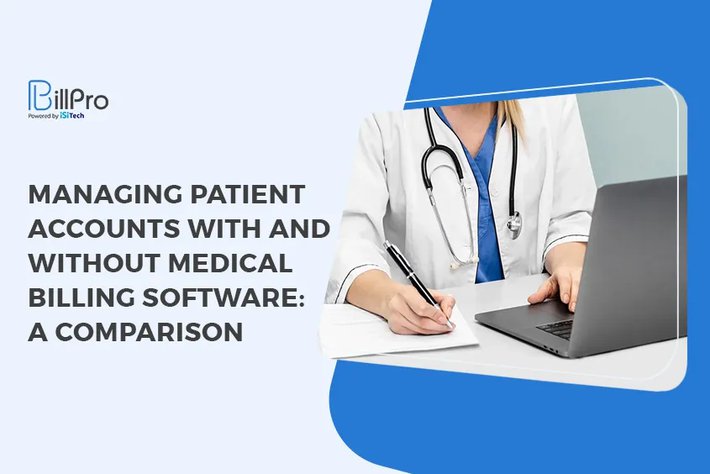In the medical field, the primary job is to protect patients’ health. But healthcare providers need their practices to remain financially healthy as well. Problems with revenue and cash flow can disrupt the functioning of your practice. Efficient revenue collection enables your practice to continue providing services to your patients.
Providing medical care is the patient-facing side of a practice. On the business side, a considerable amount of paperwork is involved. Filing and submitting insurance claims is a lot of work. Medical service providers collect payments from patients and insurance companies (either government-funded or private). The process of tracking this revenue and checking a practice’s financial performance is called revenue cycle management.
Revenue Cycle Management in Healthcare
The revenue cycle begins when a patient first makes an appointment. It ends with payment for the services rendered during that appointment. But it’s a revenue “cycle,” not a straight line and the progression is rarely straightforward. There are many steps, some repetitive, between the appointment and payment.
Before rendering services, healthcare providers need to check three things:
-
The patient's medical history
-
The patient's insurance information
-
The patient's eligibility.
This includes verifying the amount of coverage the patient’s insurance offers. Once the charges that will be borne by the patient are determined, it is up to the provider to collect from them. Collecting from insurance companies or government programs like Medicaid involves filing claims. There is often back-and-forth between the service providers and insurance payers. Many claims are rejected, resubmitted, and ultimately approved or denied. These are some of the hurdles to efficient payment processing.
An increasing number of healthcare providers are embracing technology for handling claims. Others continue to file non-electronic claims via traditional mail. The stages of the process are similar for both an electronic claim and a non-electronic claim.
The five basic stages of an insurance claim’s life cycle are:
-
Collecting patient information
-
Capturing billable charges
-
Remittance processing
-
Corresponding with insurance companies
-
Receiving payments
In this article, we will examine how using medical billing software affects the revenue cycle of patient accounts further. But before that, let’s look at the two different types of claims.
Electronic Claims
 There has been a broader trend within the medical industry to switch to electronic claims. A paper published by the American Medical Association linked switching to electronic claims with multiple benefits for medical providers, including:
There has been a broader trend within the medical industry to switch to electronic claims. A paper published by the American Medical Association linked switching to electronic claims with multiple benefits for medical providers, including:
-
Time savings
-
Resource savings
-
Error reduction
-
Claim tracking
-
Increased accuracy
-
Faster reimbursements
Essentially, an electronic claim is generated by computer software and transferred digitally to the insurer. These claims are entirely paperless. All electronic claims must comply with Health Insurance Portability and Accountability Act (HIPAA) regulations.
Non-Electronic Claims
The traditional method of filing claims involves filling out paper claim forms. These are known as non-electronic or manual claims. They are then mailed to the insurers via post.
Non-electronic claims involve a lot of clerical work with room for human error. Overlooked information, misspellings, and incorrect data can be entered. Creating non-electronic claims without billing software can be quite time-consuming. Still, learning to properly create and submit manual claims is great training. It helps new employees of healthcare organizations understand the claims process.
Comparing the Effects of Billing Software on Patient Revenue Cycles
Technology should exist to make our jobs easier. Medical billing software is a great example. Revenue cycle management is evolving along with the healthcare industry. The 2020 pandemic sped up these changes. A report in RevCycle Intelligence supported this observation. It stated that 75% of hospitals and health systems in the U.S. adopted some form of revenue cycle management technology as the pandemic intensified.
Using medical billing software to help with filing electronic patient claims makes the revenue cycle more efficient. The entire process is sped up from start to end, thanks to the power of automation. Let’s compare the revenue cycle of the life of a patient account with medical billing software to the revenue cycle of the life of a patient account without medical billing software.
Pre-Registration and Registration
Registering for an appointment is easier. This is because billing software automatically saves patients’ medical history and insurance information. This saves the time it takes to collect and verify insurance details manually.
Error Checking
Preparing a claim involves detailed data entry. The claim has to include all the pertinent information gathered before and during the patient’s visit. It also must include a list of the services provided. It must then be coded accurately before being submitted to the insurance company. Billing software greatly helps to reduce errors at this stage of the process. The latest patient data from a practice’s Electronic Health Records (EHR) is automatically used to efficiently fill out forms. The software can spot errors in formatting and correct them instantly.
Claim Processing
 Tracking the status of submitted claims becomes much simpler with medical billing software. They are automated to track the status of pending claims. Healthcare providers can check why certain claims might not be getting approved. Defective claims can be revised and resubmitted much faster when using medical billing software.
Tracking the status of submitted claims becomes much simpler with medical billing software. They are automated to track the status of pending claims. Healthcare providers can check why certain claims might not be getting approved. Defective claims can be revised and resubmitted much faster when using medical billing software.
Accounting and Finance
Automation introduces efficiency in the revenue cycle. It can be used to manage payment collection, create financial reports, and generate patient statements. Healthcare providers can also check which patient payments are pending through medical billing software.
Data Security
Since insurance claims contain patients’ confidential medical information, they have to be encrypted and secure according to HIPAA standards. Using medical billing software ensures that all claims submitted by your practice are HIPAA-compliant, thus avoiding rejection in the first round of inspections itself.
Conclusion
In conclusion, medical billing software simplifies many complications inherent in the claims process. Incorporating them into your practice can make your patient revenue cycle more efficient. Softwares like BillPro help you file error-free claims and increase your practice’s productivity.

 5/5 (2 votes)
5/5 (2 votes)
 156 views
156 views



